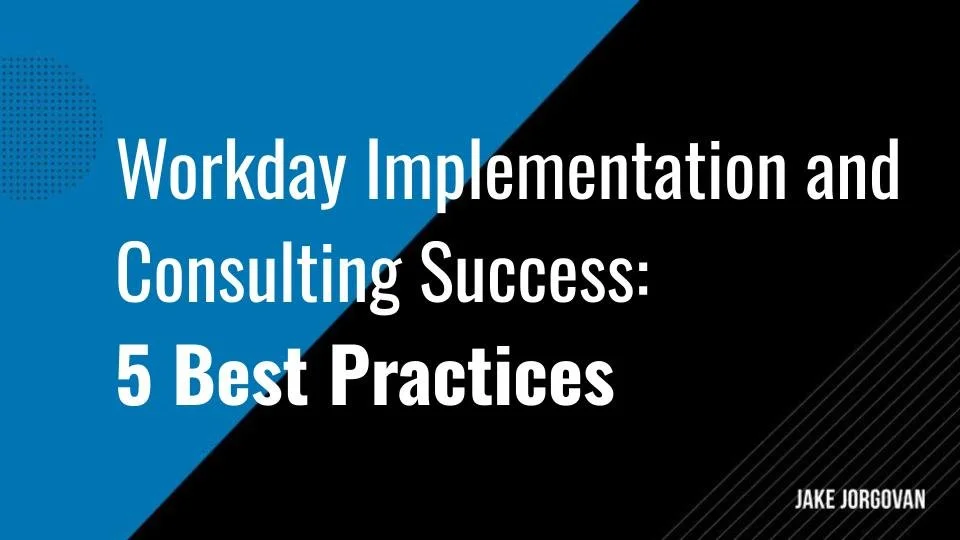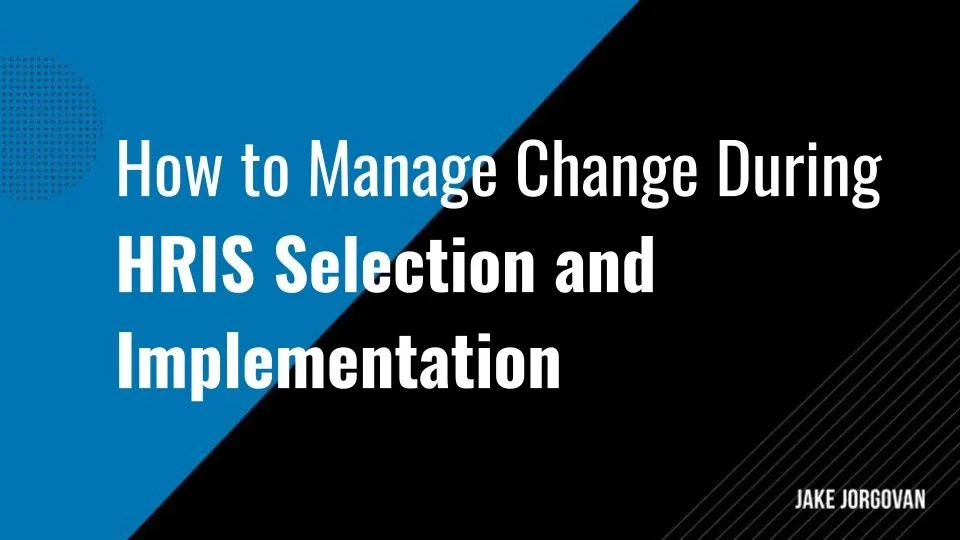Workday Implementation and Consulting Success: 5 Best Practices
Implementing Workday effectively can transform an organization’s HR, finance, and operational capabilities.
Yet, many teams struggle to leverage its full potential.
Success in Workday implementation and consulting hinges on strategic planning, expert guidance, and targeted best practices.
This article discusses five essential practices for achieving streamlined deployments, seamless integrations, and sustainable results.
Whether you’re managing your first Workday project or refining existing processes, these insights will equip you to maximize impact and ROI.
Read on to learn what separates successful Workday transformations from those that fall short.
5 Best Practices During Workday Implementation and Consulting
1) Establish a Clear Project Roadmap With Defined Goals and Milestones
Every Workday implementation thrives on solid planning. With a clear roadmap, your team doesn’t just track milestones; they navigate each stage with purpose. A structured roadmap defines goals, timelines, and project resources, keeping all contributors aligned and accountable. Follow these key steps to create a comprehensive and actionable roadmap:
Define measurable goals: Establish precise objectives for your Workday implementation, focusing on how they address business needs. Prioritize critical functionalities, identify success metrics, and clarify expected outcomes.
Set realistic milestones: Break down the project into phases, marking essential checkpoints. Align milestones with critical deliverables, such as initial configuration, data migration, and user acceptance testing. Milestones help maintain momentum, showing the team clear targets.
Map dependencies: Identify tasks or components that rely on others for completion and sequence them logically. Understanding dependencies minimizes bottlenecks and lets your team allocate resources effectively.
Assign roles and responsibilities: Clearly outline responsibilities across project team members, designating specific tasks to specific individuals. Defining accountability at each stage prevents overlap and enhances efficiency.
Build in contingency time: Factor potential delays and issues into the schedule, including additional time for data migration, quality checks, and testing. A realistic timeline builds flexibility and strengthens the roadmap’s reliability.
Regularly review and adjust: Conduct scheduled roadmap reviews to track progress and identify any emerging risks. Adjusting the roadmap as needed lets your team pivot strategically without sacrificing deadlines.
Insider Tip:
We’ve found it essential to maintain a “single source of truth” document for roadmap updates. This document should be accessible to all stakeholders so everyone sees real-time progress and any shifts in goals. This transparency boosts accountability and also reinforces alignment across all project participants.
2) Engage Key Stakeholders Early and Maintain Regular Communication
Bringing stakeholders in early is a strategic move that aligns everyone from the start. When key players understand the project's purpose, they contribute more effectively, reducing costly last-minute changes. Creating a structured engagement plan from day one ensures clear, ongoing communication and buy-in across all levels. Here’s how to do it:
Identify core stakeholders: Determine which departments and individuals will impact or be impacted by the Workday implementation. Involve leaders from HR, IT, finance, and other critical functions who can offer input and influence others.
Define communication protocols: Set consistent touchpoints for project updates, feedback sessions, and escalation paths. Transparent communication channels keep stakeholders informed and reinforce alignment with the project goals.
Hold kickoff and milestone meetings: Begin with a comprehensive project kickoff to outline objectives and roles, followed by milestone reviews to evaluate progress and discuss any challenges. These meetings bring accountability and allow stakeholders to voice concerns early.
Gather insights on requirements and limitations: Collect specific input on departmental needs, system compatibility, and anticipated hurdles. Understanding each team’s requirements minimizes misalignment and strengthens the project’s foundation.
Encourage regular feedback: Open avenues for stakeholders to share ongoing feedback as the project progresses. Continuous input ensures adaptability, allowing for course corrections before issues escalate.
Insider Tip:
We recommend implementing a quarterly stakeholder survey to gauge engagement levels and gather constructive feedback. This will give you insight into where communication may need refinement and ensure a proactive, not reactive, approach to stakeholder management.
3) Ensure Thorough Data Migration Planning and Rigorous Testing
Data migration can make or break your Workday implementation. It’s about transferring information accurately and securely. With thorough planning and testing, you minimize risk, reduce errors, and enhance overall system integrity. For a smooth migration process, follow these steps:
Assess data quality: Evaluate the data quality in your current systems to identify incomplete or outdated records. This step helps you start with clean data and prevents system issues once live.
Define data mapping standards: Establish a clear mapping between old and new data formats to ensure compatibility. Define each data field precisely and document transformations that need to occur during migration.
Develop a migration timeline: Break down migration into stages, aligning each phase with key project milestones. A structured timeline keeps your team on track and reduces the likelihood of data loss or delays.
Conduct test migrations: Perform several test runs to catch errors and verify that data fields are transferred accurately. Testing allows you to identify issues in advance and address them before the final migration.
Review security protocols: Confirm that all data migration methods meet your company’s security standards. Protecting sensitive data is essential for compliance and builds trust among stakeholders.
Plan for contingency: Prepare a fallback plan in case unexpected issues arise during the migration. This backup minimizes downtime and lets your team quickly resolve errors without compromising the project timeline.
Insider Tip:
We suggest using a “reverse mapping” step post-migration to verify accuracy. Have your team cross-check the migrated data back to the original to catch any subtle mismatches before going live. This step catches issues other tests can miss and gives you a final layer of accuracy.
4) Prioritize End-User Training and Post-Implementation Support
User adoption is critical in making your Workday implementation effective. Training and support equip end-users to maximize the platform’s value. With a structured training and post-implementation support approach, you empower users, minimize resistance, and improve system ROI. Follow these essential steps to deliver an impactful training program:
Identify training needs by role: Tailor training to each user’s responsibilities, focusing on features and workflows relevant to their tasks. Role-specific training enhances relevance, ensuring users gain practical, job-specific skills.
Develop interactive training materials: Use hands-on materials like simulations, videos, and scenario-based exercises. Interactive content keeps users engaged and builds confidence in navigating the platform.
Establish a phased training schedule: Conduct training in phases, starting with core functions and gradually introducing advanced features. A phased approach prevents overwhelm and lets users build proficiency at a steady pace.
Create a knowledge base for ongoing support: Compile a repository of FAQs, guides, and troubleshooting resources accessible to all users. An easily accessible knowledge base reduces dependency on support teams and empowers users to solve common issues.
Set up dedicated post-launch support: Offer immediate assistance post-launch to address user questions and resolve issues. Dedicated support ensures a smooth transition and helps maintain momentum in the initial adoption phase.
Insider Tip:
Conducting follow-up training sessions 30 and 60 days post-launch enhances retention and addresses real-world challenges. Offering refresher sessions lets users refine their skills and provides them a chance to ask questions that only arise with hands-on experience. This approach deepens adoption and encourages consistent use across teams.
5) Collaborate Closely With Certified Workday Partners for Expertise
Partnering with certified Workday experts maximizes the effectiveness of your implementation. Their technical knowledge and experience ensure you avoid common pitfalls and gain advanced capabilities. Engaging a trusted partner from the start lets you leverage their insights, streamlining each phase of the project. Follow these steps to make the most of your partnership:
Select a partner with proven experience: Look for a certified partner with a track record in your industry or project scope. An experienced partner understands unique industry requirements and can adapt best practices to fit your specific needs.
Define roles and expectations: Outline clear responsibilities for both your team and the partner team to prevent gaps or overlaps. Detailed roles ensure accountability and help the project move forward efficiently.
Schedule regular knowledge transfer sessions: Organize sessions where the partner shares key insights and best practices directly with your internal team. Knowledge transfer sessions build your team’s expertise and make post-implementation support more manageable.
Involve the partner in milestone reviews: Include your partner in regular milestone assessments to gain an outside perspective on project progress and risks. Their third-party perspective often uncovers potential issues early.
Review the partner’s post-launch support options: Explore available support plans to determine ongoing assistance that meets your needs. Effective post-launch support helps maintain system performance and addresses any arising challenges.
Insider Tip:
We recommend establishing an internal “knowledge champion” to serve as the primary contact with the partner. This person deepens their understanding alongside the partner and later serves as an in-house expert, facilitating smoother transitions and internal support long after the implementation is complete.
Turning Workday Implementation into Lasting Organizational Impact
Implementing Workday is a powerful step toward a more agile and efficient organization.
These best practices not only lead to a smoother rollout but also ensure that your investment drives real, lasting impact.
Success isn’t simply about going live—it’s about building a system that adapts, grows, and delivers ongoing value.
Committing to these strategies allows you to set the foundation for a Workday experience that goes beyond functionality and truly elevates your operations.




